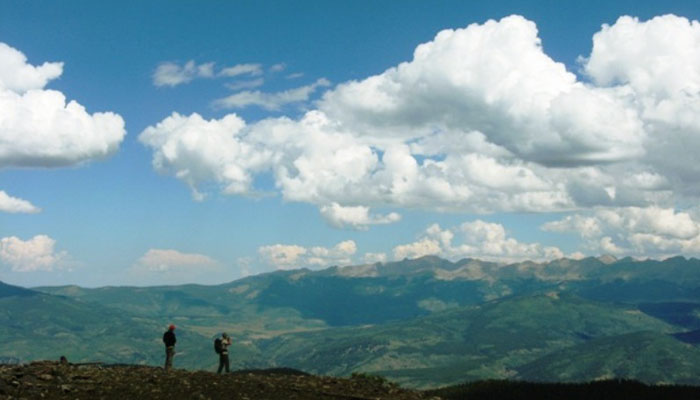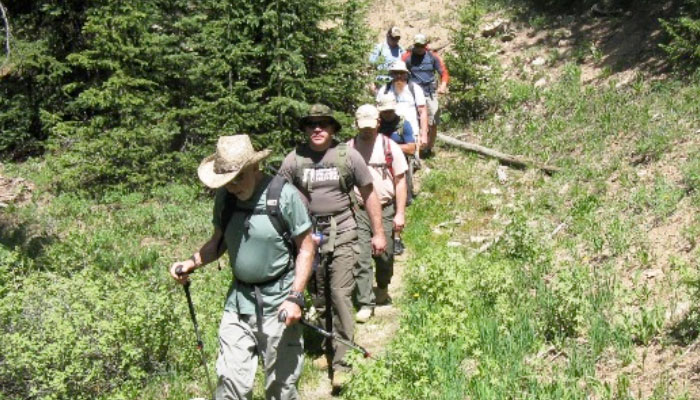We will be hiking at elevations between 8,000 and 11,500 feet, so it is important to undertake a program of physical conditioning. This should involve a consistent program of aerobic exercise, ideally hiking (running and biking are good, too). Build up distance and cadence on varied terrain until you can keep a strong, steady pace for at least two miles, or one hour. Ideally, these training walks should be done in the hiking shoes or boots you will bring to the program. It is important to break in both your feet and your footwear before the trip to avoid blisters. Remember, great things happen when we get a veteran outdoors – come ready to have enjoy the wilderness at altitude.

Clothing & Gear to get a Veteran Outdoors
The following items are recommended. Depending on weather, most of them will go to the hut with the shuttle in your gear duffel. Carry only day gear – and readings – for the hike.
- Day pack with waist belt and padded straps (essential!)
- Water bottle(s) or water bladder system (enough to carry at least one quart)
- Sunglasses with UV protection
- Sunscreen (15 SPF or higher)
- Camera
- Lunch and trail snacks (provided)
- Lightweight pair of comfortable hiking boots or shoes (break them in before the seminar)
- Waterproof stuff sacks or plastic bags to keep gear dry in daypack
- Lightweight sun hat or visor with large brim
- Lightweight, sheer liner socks and medium weight wool or wool blend hiking socks
- Mole skin or comparable foot dressing for blisters
- First Aid kit (aspirin, band aids, antibacterial wound dressing, etc.)
- Comfortable, durable shorts
- Lightweight, comfortable pants (rain pants can double for evening wear)
- Lightweight zippered, long-sleeved turtlenecks of moisture-wicking fabric (No cotton)
- Heavy zippered turtleneck/sweater of moisture-wicking fabric
- Lightweight, waterproof jacket with hood
- Lightweight, waterproof over-pants
- Fleece jacket or down vest for extra warmth
- Medium weight gloves
- Warm woolen cap
- Sleeping bag – medium weight good to 30 degrees – and personal pillow case
- Hut clothes – casual jeans, shirts, sandals, etc.
- Lightweight long underwear, tops and bottoms
- Flashlight or headlamp


